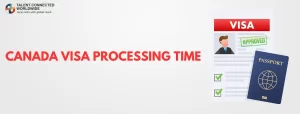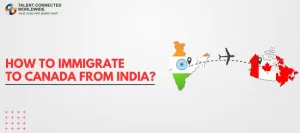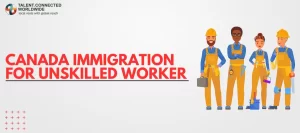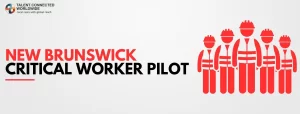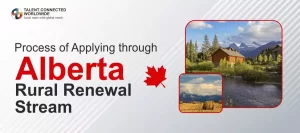Canada Immigration in 2023
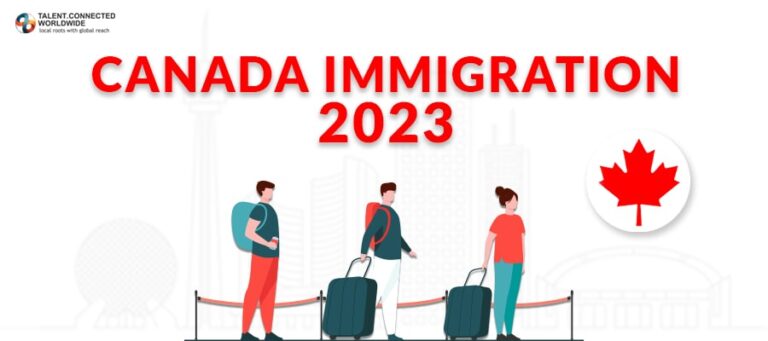
Canada always welcomes a huge number of immigrants to keep its economy healthy. Canada is suffering from a low rate of natural population growth which results in a low rate of labor power and economic growth. It is difficult for Canada to raise its taxes; it needs to support social spending on services such as education, health care, and other important sectors that provide high living standards in the country. As a result, Canada has been working on its immigration levels since the late 1980s to increase its population rate, labor power and economic growth. Based on its demographic realities and Canadian immigration trends, it appears likely that Canada will continue to gradually increase its immigration levels over the foreseeable future. Canada immigration will remain a cultural and fiscal situation in the country.
Moreover, a powerful argument is created that immigration’s importance has been raised thanks to the coronavirus pandemic. COVID-19 has weakened the Canadian economy in the short run and raised government spending on social services. Additionally, Canada’s birth rate fell to its lowest level ever of 1.47 children per woman in 2019. The low birth rate before the pandemic, and also the chance the pandemic can scale back the birth rate even further due to economic uncertainty. Canada can become even more dependent on immigration for its growth in the coming years. If Canada’s birth rate remains low, then immigration will comprise an even larger share of labor power growth in the decades to come. Canada will need to strengthen its tax base through immigration to support government spending following the pandemic.
On November 1, 2022, in Toronto, The Honorable Sean Fraser, Minister of Immigration, Refugees and Citizenship released Canada’s 2023-2025 Immigration Levels Plan. This immigration plan embraces immigration as a strategy to help businesses find workers and to attract the skills required in key areas like health care, skilled trades, manufacturing and technology to maintain the social and economic challenge. Canada will face this in the decades ahead.
Last year Canada welcomed over 405,000 newcomers – the foremost they’ve ever welcomed during a single year. The government is continuing that ambition by setting targets within the new levels plan of 465,000 permanent residents in 2023, 485,000 in 2024 and 500,000 in 2025. The plan conjointly brings an increased focus on attracting newcomers to completely different regions of the country, including small towns and rural communities.
Economic Program
- Federal Skilled Worker (Federal Skilled Program): This program is for immigrants with the required work experience, proficiency in English and/or French and other skills needed to establish themselves economically in Canada.
- Federal Skilled Trades Class (FSTC): This express entry manages foreign workers with a qualification in a skilled trade.
- Canadian Experience Class (CEC): This express entry system welcomes expressions of interest from foreign workers with Canadian work experience or graduates of Canadian educational institutions working in Canada.
- Atlantic Immigration Pilot Program (AIPP): This immigration allows designated Atlantic employers to recruit and hire foreign skilled workers or international graduates in the Atlantic Canada region (Newfoundland and Labrador, Prince Edward Island, Nova Scotia, and New Brunswick).
- Caregiver Program: The government of Canada allows eligible foreigners to provide care, in a private residence, to children, seniors and people with high medical needs.
- Federal Business Immigrant Category (Start-up Visa Program and Self-employed Class): This program allows foreigners who meet eligibility requirements the chance to run new or pre-existing businesses in Canada.
- Provincial Nominee Program (PNP): This program allows participating provinces and territories to nominate eligible economic immigration candidates for Canadian permanent residence.
- Quebec Skilled Worker Program and Quebec Business: The Quebec program runs its immigration system outside the federal system. The Government of Quebec’s planned levels for 2019 to 2021 have yet to be determined.
Family Class Programs
- This program allows permanent residents or citizens to sponsor their spouse/common-law partner and dependent child
- Also, allows to sponsor parents and grandparents
Refugees and Protected Persons and Humanitarian
- It includes protected persons in Canada and dependents abroad
- Privately-sponsored refugees are also included in this plan.
- Government-assisted refugees
Highlights of Government Immigration Levels Plan:
- Government focuses on long-term economic growth, with just over 60% admission in the economic class by 2025.
- By using the new feature in the Express Entry system they welcome newcomers with the required skills and qualifications in sectors facing serious labor shortages. Sectors like, health care, manufacturing, building traders and STEM (science, technology, engineering and math) are facing that issue.
- Government increases regional programs to address targeted local labor market needs, through the Provincial Nominee Program, the Atlantic Immigration Program and the Rural and Northern Immigration Pilot.
- Reuniting more families faster.
- Canadian government ensures that at least 4.4% of new permanent residents outside Quebec are Francophone.
- Support global crises by providing a haven to those facing persecution, including by expanding the economic mobility pathways pilot.

